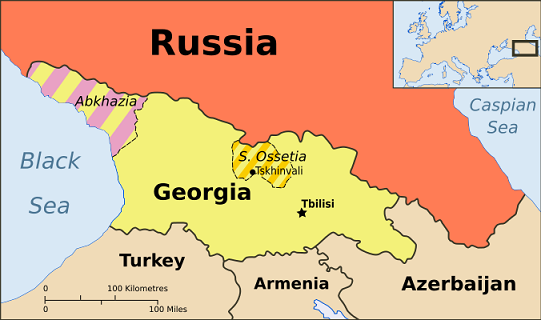Lenny has a good point when he mentions that much of the reporting on the war for South Ossetia has reported extensively on Georgian victims of the war, but less so on Ossetian victims, even though Ossetia has borne the brunt of the fighting:
Incidentally, just so that this point isn’t lost in the deliberately confusing reportage. Yes, Russian jets are attacking Georgian targets and killing civilians. Yes, the reported civilian casualties “on both sides” is reported to be over 2,000. What is quite often not stated or just gently skated over in the reporting, so laden with images of Georgian dead and wounded, is that the estimate of 2,000 civilian deaths comes from the Russian government and it applies overwhelmingly to the Georgian attacks on South Ossetia on Friday. In fact, this is the basis for Vladimir Putin’s claims of a “genocide” against South Osettians by the Georgians (is he deliberately referencing the ICTY judgment about Srebrenica here?).
The Georgian side, by contrast, claims 129 deaths of both soldiers and civilians. So, if Russian figures are good enough to reference, why is the source of the figures and their context obscured? Why is being made to look as if Russian forces are behind most of those alleged deaths? Doesn’t this just amount to a whitewash of the actions of the Georgian army in South Ossetia? And why not mention 30,000 refugees too?
Seeing the reports on the various 24 hours rolling news channels over the weekend (Sky, BBC24, CNN, Euronews and Al-Jazeera) is that footage of the Russian bombardment of Gori was prominent on all of them, but I didn’t see the equivalent from Tskhinvali when the Georgians were bombarding that city. I don’t think this was a deliberate decision on the part of these channels as much as that there just wasn’t much coming in from there. It might seem harsh to talk this way when seeing the obvious suffering of the people cauhgt in the Russian bombardment, but with these images Georgia is winning the propagandawar, if not the war on the ground. Russia and South Ossetia might claim that many more civilians on their side were killed, wounded or driven from their homes, but without pictures these claims remain abstract, miss the immediacy of the Gori footage.
